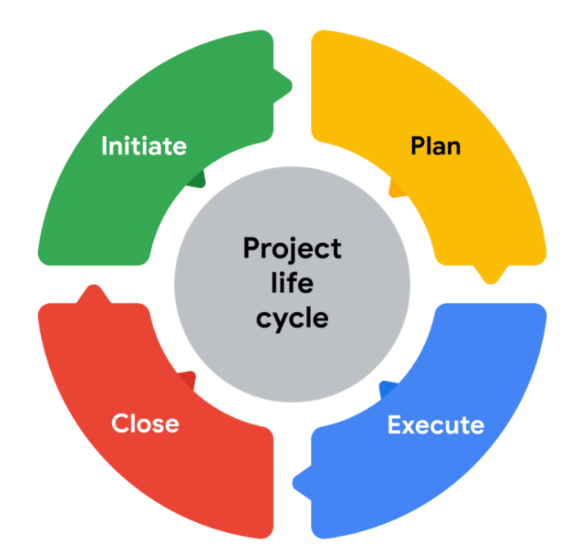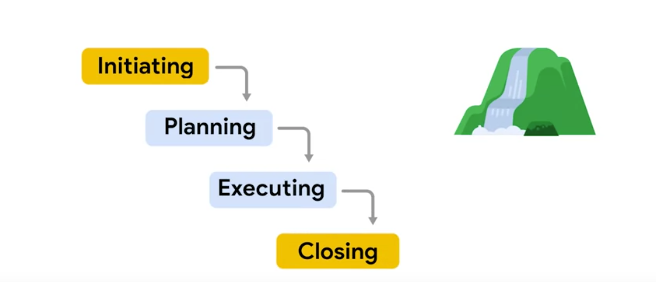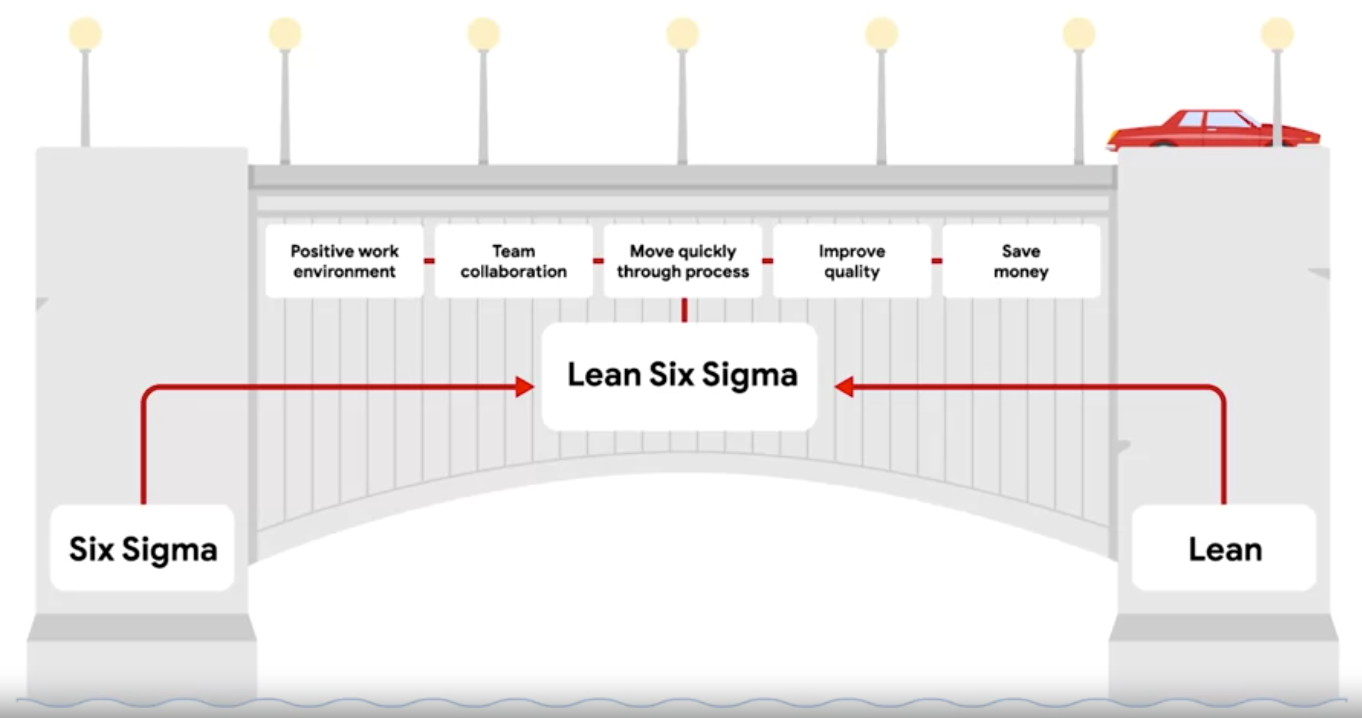Project Management Life Cycle Methodologies
Project Life Cycle

Initiate the project
Define project goals and deliverables
Identify
the budget and necessary resources
the people involved in your project
and any other details that can impact the successful completion of the project
Document all this information in one place to showcase the project’s value and (hopefully) get approval to move forward with it
Make a plan
Creating a plan of how you’re going to meet your goals is absolutely 100 percent essential!
The plan should include
a budget
a breakdown of all the tasks that you need to be completed
ways to communicate team roles and responsibilities
a schedule
resources
what to do in case your project encounters problems or needs to change
Execute & complete tasks
While project team has the job of completing the project tasks, primary tasks of the project manage are to
- monitor progress
- keep the team motivated
- remove any obstacles that might come up so that the tasks are executed well and on time
Close the project
- Your team has a moment to celebrate all of their hard work
- Evaluate how the project went
- You can make note of what worked and what didn’t so you can plan better for next time.
- Also a great way to connect with anyone outside your team who may have had interest in the project’s goal
Analyzing Different Project Phases
Initiate the project
- Defining project goals makes the details of your project clear
- Determine resources, people, and other project details. Record all of these details in project proposal
- Get project approval
Questions could be asked to help set the foundation of the project
- Who are the stakeholders?
- What are the client’s or customer’s goals?
- What is the purpose and mission of the project?
- What are the measurable objectives for the team?
- What is the project trying to improve?
- When does this project need to be completed?
- What skills and resources will the project require?
- What will the project cost? What are the benefits?
Planning
- Create a budget
- Set the schedule
- Establish your team
- Determine roles and responsibilities
- Plan for risk and change
Execute tasks
- Manage the progress
Remember, it’s NOT your job to actually do all the tasks. Your primary job as the project manager is to manage the progress of the project as a whole.
Communicate
- Communicate with your team, and anyone else involved in your project through meetings
- Written communications like memos, emails or internal chat tools, and other working documents like task reports.
Make adjustments to the schedule, budget, and allocation of resources
Monitor your project team as they complete project tasks.
Break down any barriers that would slow or stop the team from completing tasks.
Help keep the team aware of schedule and deliverable expectations.
Address weaknesses in your process or examine places where your team may need additional training to meet the project’s goals.
Close the project
Ensure all tasks have been completed
Confirm acceptance of the project outcome
Reflect on lessons learned (also called retrospective)
Communicate results with stakeholders
Celebrate completing the project
Comparing Project Management Methodologies and Approaches
A project management methodology is a set of guiding principles and processes for owning a project through its life cycle.
Help guide project managers throughout a project with steps to take, tasks to complete, and principles for managing the project overall.
Two types
Linear
- The previous phase or task has to be completed before the next can start
- Completing each step in order and sticking to the agreed upon specific results and being able to deliver just what the client ordered
- E.g.: building house
Iterative
- Some of the phases in tasks will overlap or happen at the same time that other tasks are being worked on
Waterfall and agile
Waterfall: sequential ordering of phases

- When to apply?
- when the phases of the project are clearly defined, or
- when there are tasks to complete before another can begin, or
- when changes to the project are very expensive to implement once it’s started
Agile
- Able to move quickly and easily
- Flexibility: willing to change and adapt
- Often have many tasks being worked on at the same time, or in various stages of completion which makes it an iterative approach
- When to apply?
- Client has an idea of what they want but doesn’t have a concrete picture in mind, or they have a set of qualities they’d like to see in the end result, but aren’t as concerned with exactly what it looks like.
- Example: building a website
Comparing waterfall and Agile
| Waterfall | Agile | |
|---|---|---|
| Project manager’s role | Project manager serves as an active leader by prioritizing and assigning tasks to team members. | Scrum Master acts primarily as a facilitator, removing any barriers the team faces. Team shares more responsibility in managing their own work. |
| Scope | Project deliverables and plans are well-established and documented in the early stages of initiating and planning. Changes go through a formal change request process. | Planning happens in shorter iterations and focuses on delivering value quickly. Subsequent iterations are adjusted in response to feedback or unforeseen issues. |
| Schedule | Follows a mostly linear path through the initiating, planning, executing, and closing phases of the project. | Time is organized into phases called Sprints. Each Sprint has a defined duration, with a set list of deliverables planned at the start of the Sprint. |
| Cost | Costs are kept under control by careful estimation up front and close monitoring throughout the life cycle of the project. | Costs and schedule could change with each iteration. |
| Quality | Project manager makes plans and clearly defines criteria to measure quality at the beginning of the project. | Team solicits ongoing stakeholder input and user feedback by testing products in the field and regularly implementing improvements. |
| Communication | Project manager continually communicates progress toward milestones and other key indicators to stakeholders, ensuring that the project is on track to meet the customer’s expectations. | Team is customer-focused, with consistent communication between users and the project team. |
| Stakeholders | Project manager continually manages and monitors stakeholder engagement to ensure the project is on track. | Team frequently provides deliverables to stakeholders throughout the project. Progress toward milestones is dependent upon stakeholder feedback. |
Lean and Six Sigma

💡 Idea: when your team feels valued, motivation and productivity increases and the whole process functions more smoothly.
Lean methodology is often referred to as Lean Manufacturing because it originated in the manufacturing world.
- Main principle: removal of waste within an operation. By optimizing process steps and eliminating waste, only value is added at each phase of production.
- Use case: when you want to use limited resources, reduce waste, and streamline processes to gain maximum benefits.
- Tool
- Lean 5S quality tool
- Sort: Remove all items not needed for current production operations and leave only the bare essentials.
- Set in order: Arrange needed items so that they are easy to use. Label items so that anyone can find them or put them away.
- Shine: Keep everything in the correct place. Clean your workspace every day.
- Standardize: Perform the process in the same way every time.
- Sustain: Make a habit of maintaining correct procedures and instill this discipline in your team.
- Kanban
- The Kanban scheduling system, or Kanban board, is a visualization tool that enables you to optimize the flow of your team’s work.
- It gives the team a visual display to identify what needs to be done and when.
- The Kanban board uses cards that are moved from left to right to show progress and help your team coordinate the work.
- Lean 5S quality tool
Six Sigma
- A methodology used to reduce variations by ensuring that quality processes are followed every time
- Seven key principles
- Always focus on the customer.
- Identify and understand how the work gets done. Understand how work really happens.
- Make your processes flow smoothly.
- Reduce waste and concentrate on value.
- Stop defects by removing variation.
- Involve and collaborate with your team.
- Approach improvement activity in a systematic way.
- Use this methodology to find aspects of the product or process that are measurable like time, cost, or quantity. Then inspect that measurable item and reject any products that do not meet the Six Sigma standard. Any process that created unacceptable products has to be improved upon.
Lean Six Sigma = Lean + Six Sigma
- Products developed using Lean methods are then inspected or tested using Six Sigma standards. The products that do not meet these standards are rejected.
Phases of Six Sigma: DAMIC
Define
O used in projects that aim to save money, improve quality, and move through processes quickly.
Define the project goal and what it will take to meet it (similar to the initiation phase of traditional project management)s
Measure
- Measure how the current process is performing (focus on data)
- E.g.: company generate reports on a weekly, monthly, quarterly basis.
Analyze
- Identify gaps and issues
- From your data, you’ll have a strong understanding of causes and solutions to get to the next stage, improve.
Improve
- Should only be made after a careful analysis
Control
- Learning from the work you did up front to put new processes and documentation in place and continue to monitor, so the company doesn’t revert back to the old, inefficient way of doing things.
Advantages 👍
- Prevents the likelihood of skipping important steps
- Increases the chances of a successful project
When to apply?
When the project goal includes improving the current process to fix complex or high risk problems like improving sales, conversions, or eliminating a bottleneck, which is when things get backed up during a process.